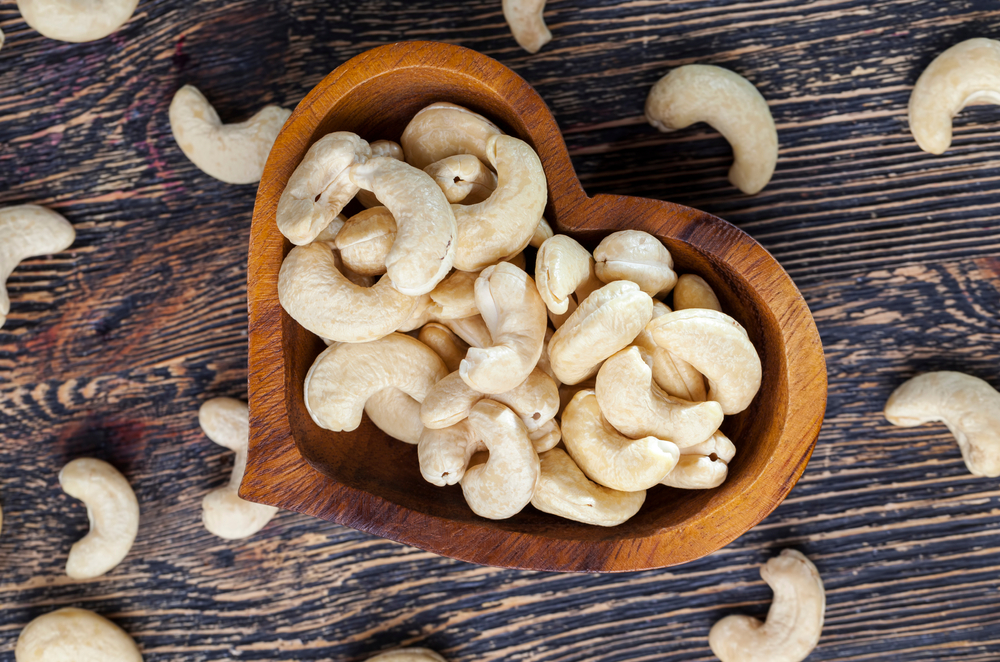
The Ultimate Cashews Guide: Discover New Tastes and Combinations
When it comes to nuts, the cashew has always been a staple. Its creamy consistency and mild, buttery flavor make the cashew a favorite of nut lovers worldwide. However, while munching on a handful of cashews is enjoyable in its own right, this nut is much more versatile than you might think.
So, with that in mind, let’s take a closer look at this humble ingredient and see what secrets we can unlock from it. Here is the ultimate cashews guide.
A Brief Introduction to the Cashew
Although cashews are widely considered nuts, they’re technically a fruit. In fact, if you happened across a cashew tree in the wild, you may not recognize it at all. The nut part we consume is the fruit of a pear-shaped, fleshy stalk called a drupe. The drupe is also edible, and many people use it in cuisines worldwide.
As for the fruit portion, it’s protected by a toxic shell. Inside, there is the seed, which is what we eat. Also, because the shell is toxic, you can only find unshelled cashews in stores. So, instead of a nut, a cashew is technically a seed. However, no matter what you call it, it’s delicious!
In case you’re curious, for something to be technically classified as a nut, it must have a hard outer shell that does not open to release the seed inside. Based on this definition, many other “nuts” (including peanuts) are actually seeds or legumes. True nuts include walnuts, hazelnuts, chestnuts, and pecans.
Different Ways to Use Cashews
Because of the creamy consistency and mild flavor, cashews are highly versatile and can be used in various culinary dishes. We recommend you experiment with these nuts to discover which taste combinations you like best, but here are a few of our favorite options:
Cashew Butter
Nut butter has been popular in recent years, with new varieties dethroning the reigning champ, peanut butter. While almond butter is almost as well-known, cashew butter is even more delicious. Once you taste the thick, creamy concoction, you’ll want to put it on virtually everything, from bagels to toast to the top of a spoon.
Technically, you only need a high-quality food processor and an oven to make cashew butter. Roasting the nuts for about 10-15 minutes at 375 degrees can enhance their natural flavors and oils. Then, toss the nuts into the processor and grind until you get the right consistency. For faster results, you can add some oil to the mix.
Coconut oil works well, but you can choose different types of oil to see which one you prefer. Putting a dollop of oil into the processor helps make a smoother and creamier consistency and allows you to work faster.
Cashew Milk
As with nut butter, nut milk has also become a trendy item. Cashew milk has a unique flavor that works well in cereal, or you can use it in your favorite baked treats. However, you must adjust your recipes accordingly since it won’t have the same milkfat consistency. The type of fat in cashews differs from that of cow milk, so it breaks down faster.
To make cashew milk, you’ll need to soak your nuts in water overnight. Then, you can blend them with two cups of fresh water in a blender until smooth. For added flavor, we recommend putting some cinnamon, vanilla extract, and a dash of sea salt into the mix. You’ll have to add another two cups of water for a milkier consistency. However, you can use less water if you like your cashew milk a little thicker.
Sometimes, blenders won’t break down the cashews all the way, meaning there will be small pieces left. If that happens, strain the milk through a cheesecloth. The remnants work well as bird feed, or you can dry the pieces out and use them as a topping for salads.
Cashews on Salads
Nuts make a great addition to fresh salad because of their crunchiness and flavor. Cashews are especially adept at enhancing your next salad because they’re relatively easy to grab with a fork and don’t overwhelm your taste buds.
For a better culinary experience, we recommend using flavored cashews on your salad. For example, a coconut cashew mix can add some sweetness that tickles your tastebuds. Alternatively, salted cashews can give your salad a little kick without overpowering any other ingredients.
Cashews as a Snack
Nuts are a fantastic snack because they keep you satisfied and help you feel full for longer. Because nuts like cashews have lots of good fats and oils, you don’t need to eat a lot of them to curb your hunger cravings. Plus, when chewing on flavored cashews, you can get a better snacking experience at the same time.
Cashews are also great to add to other snacks. For example, if you’re making homemade trail mix, a few handfuls of cashews will balance out the other ingredients. Alternatively, you can mix cashews with other crunchy items like pretzels or crackers for a salty, creamy blend.
Cashew Parmesan
If you’re a vegetarian, you may be surprised to learn that parmesan cheese has animal byproducts in it. Fortunately, you can make a cashew parmesan recipe that delivers the same flavors without the guilt. All you need are some cashews, nutritional yeast, and salt to taste.
Add the ingredients to a food processor until the nuts become small grains, almost like thick sand. If you process the nuts too long, you’ll wind up with a buttery paste, so you must keep your eye on the mixture.
Cashew parmesan works just like the real thing, so add it to pasta, salad, or anything else you would use parmesan cheese for.
Get Your Cashew Fix from Almond Brothers!
Is your mouth watering for some cashews? Almond Brothers has you covered! We offer a delicious selection of flavored cashews, including cinnamon-roasted, coconut, and roasted salted cashews. Our nuts are sure to satisfy, and we have plenty of other snack options available! Order yours today!
